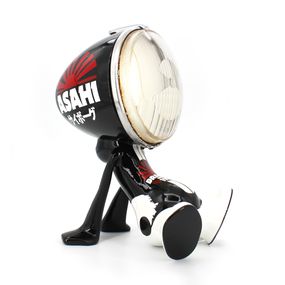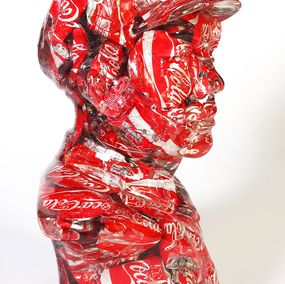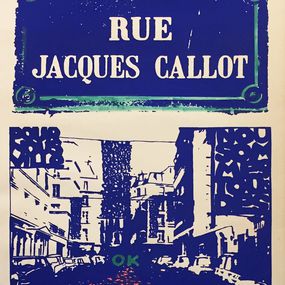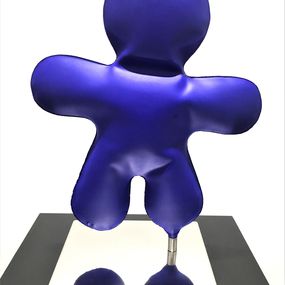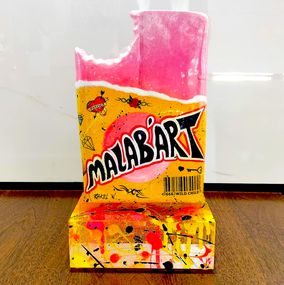
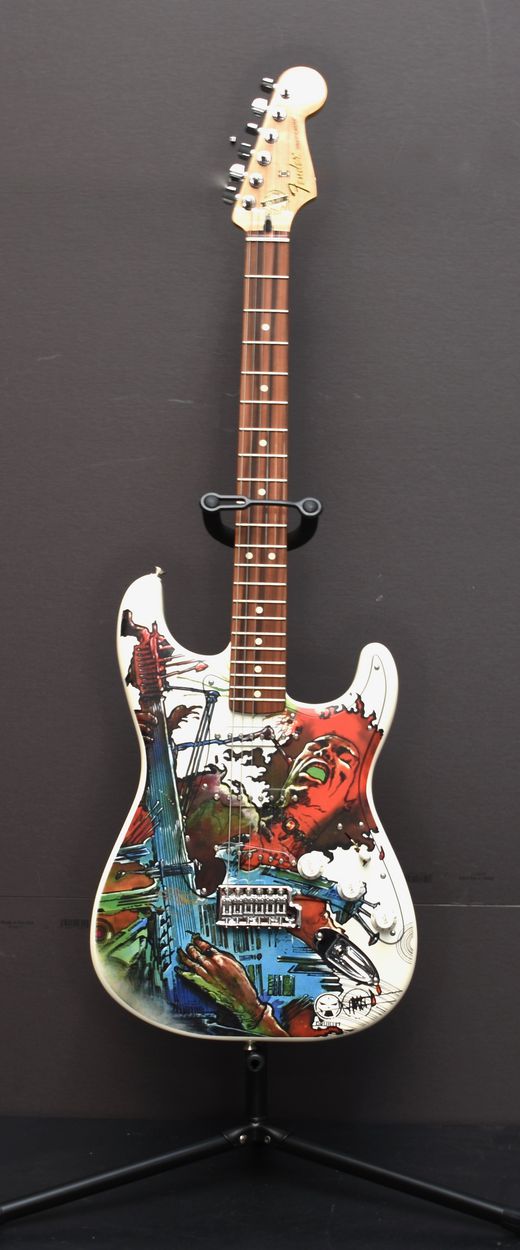
Visionary artist known for groundbreaking sci-fi illustrations, comic series, and multimedia collaborations.
Biography
Philippe Druillet began his career as a photographer; he has just turned 16. Having become a Parisian, he quickly got to know certain figures of the time such as Jean Boullet. In 1966, Eric Losfeld published his first album, Lone Sloane, le mystère des abîmes. To be still imperfect, the graphics of Druillet already portend a great future. Druillet then devoted himself to science fiction illustration: he collaborated with the great magazines of the time such as Fiction et Galaxie and illustrated several volumes of the CLA (Anticipation Book Club), including Elric le necromancer by Michael Moorcock, Dracula by Bram Stoker and The House at the Edge of the World by William H. Hodgson. 1970 is the year of all changes, because he entered Pilote with new episodes of Lone Sloane (album Les Six Voyages de Lone Sloane, Dargaud, 1972) which this time will revolutionize the world of comics. Two years later, with Délirius, he continues the extraordinary adventures of his hero, but this time on a screenplay by Jacques Lob. In collaboration with Michel Demuth, he designed in 1973 and 1974 the surprising Yragaël ou la Fin des temps (album Dargaud) and Urm le fou (album Dargaud, 1975). During the same period, he created for Phénix a comic strip with faster and more lively graphics, recounting the disorderly escapades of an unconventional character Vuzz ... Disappointed by the relations with Dargaud editions, Druillet joined forces, in 1975, with Moebius, Jean-Pierre Dionnet and Bernard Farkas to create Humanoïdes Associés and the magazine Métal Hurlant. In the latter, he published several full stories (gathered in the album Mirages aux Humanoïdes Associés, 1976), the new adventures of Vuzz (album Là-bas, Humanoïdes Associés, 1978), Gail (album edited by the author in 1978 ) and the first part of Salammbô after Gustave Flaubert (album Humanoïdes Associés, 1980). In 1975, torn apart by the illness of his wife Nicole, Philippe Druillet wrote a violent and desperate story for Rock and Folk: La Nuit (album Humanoïdes Associés, 1976). Returning to Pilot, he produced complete stories under the title of Nosferatu (the album would not appear by Dargaud until 1989) and, above all, undertook the sequel to Salammbô in 1982: Carthage (album Dargaud, 1982; the third and last episode, Matho, will be released on an album from the same publisher in 1986). At the same time, Druillet also works as a screenwriter with cartoonists like Alexis, Gotlib, Bihannic, Picotto and Didier Eberoni. Two albums were born from these collaborations: Firaz et la ville-fleur (Picotto -Dargaud drawings, 1980) and Le Mage Acrylic (Bihannic - Humanoïdes Associés drawings, 1982). Illustrator and painter, Philippe Druillet develops numerous portfolios, alone: Elric le Nécromancien (Editions Pellucidar, 1971), Druillet portfolio, kingdom of shadow and light (Editions Temps futur, 1980), D (Editions JLMPDS, Toulouse, 1983) , Returns (Editions Le Pythagore, 1993), or as a collective: The Last Additional Train (resumption of the drawings made for France-Rail, Editions Alain Beaulet, 1984), Les Dieux (Editions du Phylactère, 1984), Graine de pro (Editions Ecureuil savings bank, 1985), Checkers game, the heroines of Lob (Editions Atelier de serigraphie d'Angoulême, 1986), We walked on gouache (Editions Ecole des beaux-arts de Metz, 1995). He is also the author of two books containing several of his numerous illustrations: 30 x 30 Druillet (Editions Humanoïdes Associés, 1981) and PAVE (Editions Dargaud, 1988). A multi-faceted artist, Druillet combines creations with an unusual appetite: he contributes to the design of Rolf Liebermann's Wagner Space Opéra for the Paris Opera (1978 to 1983). For Daum, he produced several pieces in glass paste from 1984. The following year, he designed the aesthetics of the Porte de la Villette metro station and embarked on a series of cartoons entitled L'Enfant bleu ( produced by Antenne 2), draws many movie posters (La Vampire nue, La Guerre du feu, Le Nom de la rosé, etc.), in 1990 produced Excalibur, a clip for William Sheller, animated the decoration of a restaurant , developed in 1993 The Battle of Salammbô, a sumptuous show composed of computer-generated images, laser beams and a slide show for the Géode de la Villette in Paris, exhibited his paintings for a long time around the world, designed the trophy " René Goscinny ”(1996), produced four different models of the“ Chevaliers ”(Gaëlic SA Editor), including an impressive resin-bronze version measuring 2.10 m in height, designed for large-scale production of perfume bottles (1997), co-signed Xcalibur, a powerful television series 40 times 26 minutes in full 3D (Production Ellipas-nime, Robert Réa Prod., Gribouille, Didier Pourcel, France 2,1997-2002), etc. In 1996, Druillet published, in tribute to photographer Robert Doisneau and with Stan Barets, the volume Paris de fous (Editions Dargaud). Winner of the Grand Prix du Salon international d'Angoulême in 1988 and several others, in Lucca and Rome in particular, Philippe Druillet published in 2000 a new part of the adventures of Lone Sloane, Chaos, a return long awaited by the old and the new comic book lovers performed by Albin Michel editions. On the occasion of this release, this house reissued most of its works in comics and published Les Univers de Druillet (2003), a book revealing the innumerable talents of this extraordinary author. Let us add that between 1996 and 2002, he also gave his full potential in the graphic design of Ring 1 and Ring 2 (Axel Tribe Productions), two CD-ROMs of games in total 3D in which he carried out work devoted to the Tetralogy of Richard Wagner at the measure of his dreams. In February 2000, on the occasion of the second millennium, he presented an audiovisual show, produced from two thousand five hundred slides, projected on the giant walls of the Cathedral of Baux-de-Provence. In 2002 Philippe Druillet released a new series of 3D cartoons for television (Wolflang Production, Alexandre Brillant) entitled Nosferatu. Originally produced by Cryo, a video game adapting the universe of Salammbô was released in April 2003 under the Adventure Company label. In addition, in 2003 and 2006. let us point out a magnificent series of jewels (rings, bracelets and earrings) produced by the Galerie Frédéric Marchand in Paris, and eight decorative motifs for steel lighters of the “Zippo” brand. In 2004, director Josée Dayan commissioned Philippe Druillet to design the sets for a new adaptation of Maurice Druon's Les Rois Maudits. Together with the release of a ring-seal produced for the Frédéric Marchand gallery, he is currently working on Délirius II, the screenplay of which is written by benjamin Legrand and Druillet himself, a sequel and a tribute to the late Jacques Lob, and is preparing for September a beautiful book devoted to the decorations that he produced in collaboration for Benjamin de Rothschild (creation of the gardens, decorations, furniture and accessories for a hotel in Megève as well as the decoration, facades and gardens of a bodega in Argentina) .
Nationality
Categories
Artistic movements

Philippe Druillet
Sculpture - 12.5 x 12.5 x 12.5 cm Sculpture - 4.9 x 4.9 x 4.9 inch
$488


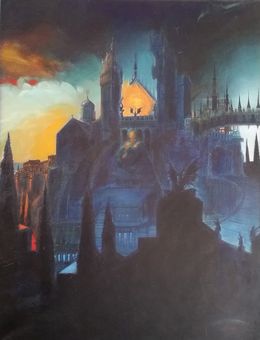
Philippe Druillet
Painting - 115 x 89 x 4 cm Painting - 45.3 x 35 x 1.6 inch
$39,045

Philippe Druillet
Sculpture - 12.5 x 12.5 x 12.5 cm Sculpture - 4.9 x 4.9 x 4.9 inch
$488




Philippe Druillet
Print - 100 x 40 x 4 cm Print - 39.4 x 15.7 x 1.6 inch
Sold

Philippe Druillet
Print - 100 x 40 x 4 cm Print - 39.4 x 15.7 x 1.6 inch
Sold











